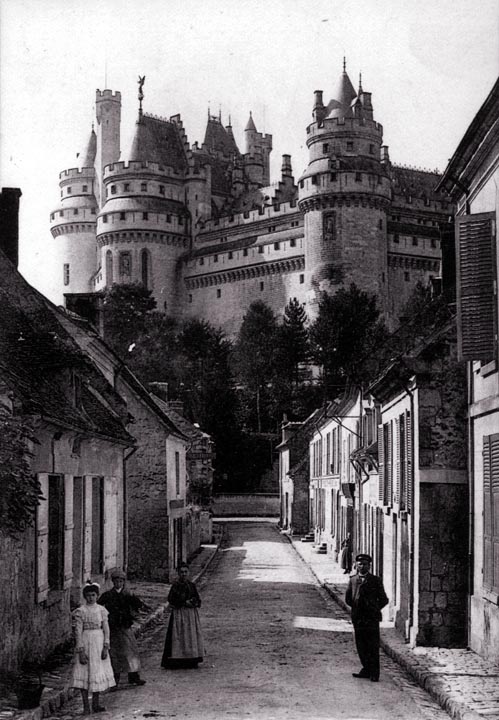
The magnificent castle looms over the modest houses at its foot. I would guess that this was originally a defensive structure that was later modified as a residence. The castle was apparently built in the 14th Century but dismantled in the 17th Century. It was rebuilt in the 19th Century by architect Eugène Viollet-Le-Duc for Napoleon III. In medieval times, buildings within the city walls paid high taxes to support their construction an maintenance. Those living just outside the city gates enjoyed some economic advantages, such as lower real estate taxes and sometimes entry tariffs for goods, they were not protected against raids and would have had to take shelter within the castle during attacks, leaving their dwellings and goods vulnerable. For this reason, buildings within the walls were more desirable than those outside, and we see that, as cities grew, they often rebuilt their walls to protect the new sections of the city. Amsterdam, for instance, rebuilt its walls many times over a span of about 500 years. The houses in this street, while modest in size and ornamentation, are still very attractive. The proportions of the street are nearly square, as defined in the previous chapter. This gives the street a static appearance, which is not entirely unattractive in a peaceful residential street. Observe that real shutters that can be closed (and, in France, often are) add much more to a building than plastic or metal shutters that are simply screwed to the face of a building as decorative nostalgia. They serve no purpose and are far less attractive than real working shutters. They eye cannot be tricked in these matters - it distinguishes immediately between the real and the fake.
|
 Next City Design Home
E-mail |